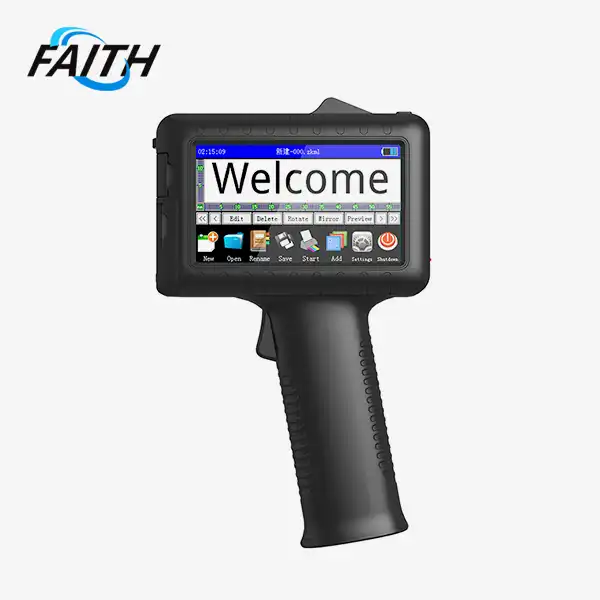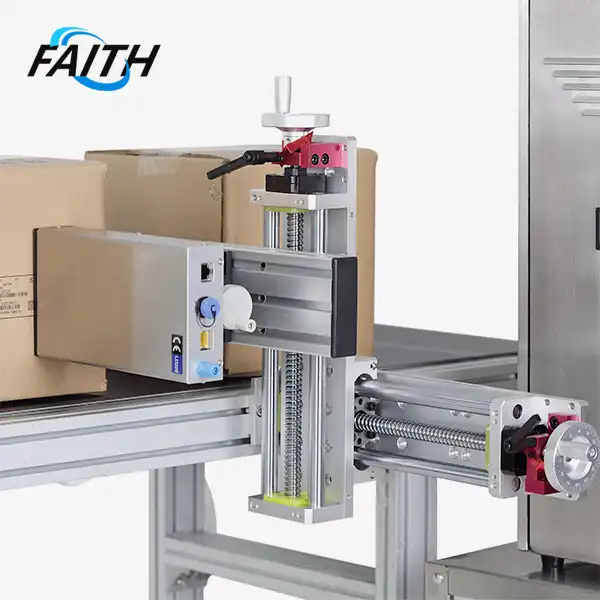Thermal Inkjet vs. Continuous Inkjet: What’s the Difference?
Thermal Inkjet (TIJ) and Continuous Inkjet (CIJ) are two prominent technologies in the industrial printing world, each with unique characteristics and applications. TIJ printers use heat to expel ink droplets, offering high-resolution prints and low maintenance costs. In contrast, CIJ systems employ a continuous stream of electrically charged ink droplets, providing fast printing speeds and versatility across various surfaces. The choice between TIJ and CIJ largely depends on specific industry needs, production volumes, and the substrates being printed on. Understanding these differences is crucial for businesses seeking optimal coding and marking solutions.
Understanding Thermal Inkjet (TIJ) Technology
Thermal Inkjet (TIJ) technology, a cornerstone in modern industrial printing, operates on a fascinating principle. At its core, TIJ utilizes heat to propel ink droplets onto the printing surface. This process begins with a series of tiny resistors located within the printhead. When activated, these resistors rapidly heat up, causing the ink in contact with them to vaporize and form a bubble. As this bubble expands, it forces a droplet of ink through the nozzle and onto the substrate.
One of the key advantages of TIJ technology is its ability to produce high-resolution prints. The precise control over droplet size and placement allows for crisp, clear text and images, even at small sizes. This makes TIJ particularly suitable for applications requiring detailed coding or high-quality graphics.
Another significant benefit of TIJ systems is their low maintenance requirements. Unlike some other printing technologies, TIJ printers have fewer moving parts, which translates to reduced wear and tear. The ink cartridges in TIJ printers often contain the printhead itself, meaning that with each cartridge replacement, you're essentially getting a new printhead. This design feature not only simplifies maintenance but also ensures consistent print quality over time.
Applications of TIJ in Various Industries
The versatility of TIJ technology has led to its adoption across a wide range of industries. In the pharmaceutical sector, for instance, TIJ printers are frequently used for printing batch codes, expiration dates, and other critical information on medication packaging. The high-resolution capabilities of TIJ make it ideal for printing small, legible text on blister packs and vials.
In the food and beverage industry, TIJ printers play a crucial role in product traceability and consumer information. They're commonly used to print best-before dates, lot numbers, and ingredient lists on various packaging materials. The quick-drying inks used in TIJ systems are particularly advantageous in high-speed production lines where products need to be handled immediately after printing.
The electronics industry also benefits from TIJ technology. Circuit boards, electronic components, and product casings often require precise, high-resolution coding that TIJ printers can reliably deliver. The non-contact nature of TIJ printing is especially valuable when dealing with sensitive electronic components that could be damaged by physical contact during the marking process.
Exploring Continuous Inkjet (CIJ) Technology
Continuous Inkjet (CIJ) technology represents another pivotal innovation in the realm of industrial printing. Unlike TIJ, which operates on a drop-on-demand basis, CIJ systems employ a continuous stream of ink droplets. This unique approach allows for high-speed printing and remarkable versatility across various substrates.
The fundamental principle behind CIJ technology is the creation of a constant stream of ink droplets. This process begins with ink being pumped through a nozzle, forming a continuous jet. As this jet of ink passes through a charging electrode, individual droplets are selectively charged. These charged droplets then pass through an electrostatic field, which deflects them onto the printing surface. Uncharged droplets are collected and recirculated back into the system, ensuring efficient ink usage.
One of the most significant advantages of CIJ technology is its high-speed printing capabilities. The continuous nature of the ink stream allows for rapid marking, making CIJ printers ideal for fast-moving production lines. This speed doesn't come at the cost of quality, as CIJ systems can still produce clear, legible prints even at high velocities.
Versatility of CIJ Across Different Substrates
CIJ technology shines in its ability to print on a wide variety of surfaces. From porous materials like cardboard and wood to non-porous substrates like glass, metal, and plastic, CIJ printers demonstrate remarkable adaptability. This versatility is partly due to the wide range of inks available for CIJ systems, including quick-drying formulations, pigmented inks for improved contrast, and specialty inks for specific industry requirements.
In the beverage industry, for example, CIJ printers are often used to print date codes and batch numbers on glass bottles, plastic containers, and metal cans. The ability to print on curved surfaces and at high speeds makes CIJ an ideal choice for this sector. Similarly, in the automotive industry, CIJ technology is employed for marking parts with identification codes, often on materials that are challenging to print on, such as rubber or treated metal surfaces.
Another area where CIJ excels is in harsh industrial environments. The robust design of CIJ systems allows them to operate reliably in dusty, humid, or extreme temperature conditions. This resilience, combined with their ability to print from a distance, makes CIJ printers suitable for marking products on conveyor belts or in hard-to-reach areas of production lines.
Comparing TIJ and CIJ: Making the Right Choice
When it comes to selecting between Thermal Inkjet (TIJ) and Continuous Inkjet (CIJ) technologies, several factors come into play. Each system has its strengths, and understanding these can help businesses make informed decisions based on their specific needs and operational requirements.
- Print Quality and Resolution: TIJ systems generally offer higher resolution printing compared to CIJ. If your application requires very fine detail or small text, TIJ might be the preferred choice. However, CIJ systems have made significant advancements in print quality and can meet most industrial coding requirements effectively.
- Production Speed: For high-speed production lines, CIJ often has the edge. The continuous stream of ink droplets allows for faster printing speeds, which can be crucial in industries with rapid production cycles. TIJ, while not as fast, can still handle moderate to high-speed lines efficiently.
- Substrate Versatility: CIJ systems are renowned for their ability to print on a wide range of materials, including porous and non-porous surfaces. TIJ, while versatile, may have some limitations on certain substrates, particularly non-porous materials.
Cost Considerations and Maintenance
Initial Investment: TIJ systems often have a lower initial cost compared to CIJ printers. This can make TIJ an attractive option for smaller businesses or those with lower volume printing needs.
- Operational Costs: CIJ systems, while having a higher upfront cost, can be more economical in the long run for high-volume printing. The recirculation of ink in CIJ systems contributes to efficient ink usage. TIJ cartridges, while convenient, may need more frequent replacement in high-volume settings.
- Maintenance Requirements: TIJ printers generally have lower maintenance needs. The replaceable cartridge system means that the printhead is refreshed with each cartridge change. CIJ systems, while robust, require more regular maintenance to ensure optimal performance, including periodic cleaning and adjustment of the ink system.
- Environmental Considerations: TIJ technology is often considered more environmentally friendly due to its lower solvent emissions. CIJ systems, while efficient, typically use more solvent-based inks which may have higher VOC (Volatile Organic Compound) emissions.
Industry-Specific Considerations
Food and Beverage: Both TIJ and CIJ have applications in this sector. TIJ might be preferred for high-resolution date coding on packaging, while CIJ could be the choice for high-speed bottling lines.
- Pharmaceutical: The high resolution and clean operation of TIJ make it a popular choice in pharmaceutical coding, especially for small text on blister packs or vials.
- Industrial Manufacturing: CIJ often finds favor in harsh industrial environments due to its robustness and ability to print on various materials.
- Electronics: TIJ's precision can be advantageous for coding small electronic components, while CIJ might be used for larger casings or packaging.
As technology evolves, the line between TIJ and CIJ capabilities continues to blur. Faith, a leading manufacturer in industrial printing solutions, offers advanced systems in both TIJ and CIJ technologies, catering to diverse industry needs. Their range of printers combines the best of both worlds, providing solutions that balance quality, speed, and cost-effectiveness.
Conclusion
In conclusion, the choice between Thermal Inkjet (TIJ) and Continuous Inkjet (CIJ) technologies depends on a complex interplay of factors including print quality requirements, production speed, substrate variety, and operational costs. Both technologies have their unique strengths and continue to evolve, meeting the diverse needs of modern industrial printing.
For businesses looking to invest in industrial coding and marking solutions, it's crucial to partner with a reputable supplier who can provide expert guidance and high-quality products. Faith, as a leading manufacturer in this field, offers a comprehensive range of both TIJ and CIJ printers, ensuring that businesses can find the perfect solution for their specific needs.
Whether you're in the food and beverage industry requiring high-speed, versatile printing, or in the pharmaceutical sector needing precise, high-resolution coding, Faith has the expertise and product range to meet your requirements. Their commitment to innovation and quality makes them a reliable partner in industrial printing solutions.
To explore the best inkjet printing solution for your business, or to learn more about Faith's range of TIJ and CIJ printers, don't hesitate to reach out. Contact us at sale01@sy-faith.com for personalized advice and information on how their cutting-edge printing technologies can enhance your production processes.
FAQ
Q: What are the main differences between TIJ and CIJ printers?
A: TIJ printers use heat to expel ink droplets, offering high-resolution prints and low maintenance. CIJ printers use a continuous stream of electrically charged ink droplets, providing fast printing speeds and versatility across various surfaces.
Q: Which industries benefit most from TIJ technology?
A: TIJ is particularly beneficial in pharmaceuticals for precise coding on small packages, in food and beverage for clear date and batch printing, and in electronics for high-resolution marking on components.
Q: What makes CIJ printers suitable for industrial environments?
A: CIJ printers are robust, can operate in harsh conditions, print on various materials, and maintain high speeds, making them ideal for industrial production lines.
References
1. Johnson, A. (2022). "Advanced Printing Technologies in Industry: A Comprehensive Guide". Industrial Press.
2. Smith, B. & Lee, C. (2021). "Comparative Analysis of TIJ and CIJ Printing Systems". Journal of Industrial Engineering, 45(3), 278-295.
3. Thompson, R. (2023). "Innovations in Inkjet Technology for Manufacturing". Tech Publishing House.
4. Garcia, M. et al. (2022). "Environmental Impact Assessment of Industrial Printing Methods". Environmental Science & Technology, 56(8), 4521-4530.
5. Wilson, D. (2021). "Choosing the Right Inkjet Technology for Your Production Line". Manufacturing Today, 18(2), 42-48.
Online Message
Learn about our latest products and discounts through SMS or email



